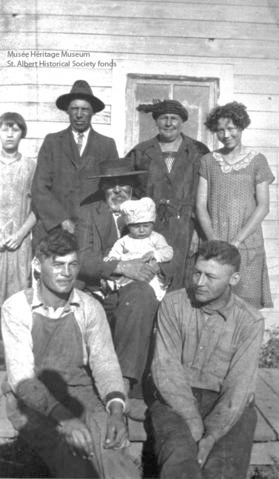An interview between Naomi Zurevinski and Nicole St-Onge, author of “He was neither a soldier nor a slave: he was under the control of no man” : Kahnawake Mohawks in the Northwest Fur Trade, 1790-1850, on the work that she did for her article, as well as what sparked her interest in studying Mohawks men’s role in the fur trade. St-Onge’s article appeared in the Canadian Journal of History/Annales Canadiennes D’Histoire in 2016, and is available here to read for free, for a limited time.
Originally completing her undergraduate and master’s degrees in anthropology, Nicole St-Onge made the switch to history when she decided she wanted to do her PhD on Metis ethno-history – specifically looking at how the village of Ste-Agathe in Manitoba experienced the transition from being a Metis community to becoming a French-Canadian one.
“The department [at the University of Manitoba] took a gamble on me, since prior to the PhD I had taken a total of one undergraduate history courses during the course of my studies – it was a first year Canadian history survey course! The first year [of my PhD] was a bit rough,” St-Onge said.
From her work on the Metis, St-Onge’s interest in the fur trade and Indigenous voyageurs was born. She became interested in the background to the Plains Metis, and as a francophone, was able to easily access a variety of sources – including Montreal Voyageur Contracts.
St-Onge discusses these contracts in her 2016 article published with the Canadian Journal of History/ Annales Canadiennes D’Histoire. In this article, St-Onge looks at Mohawk men who signed fur trading contracts between 1714 and 1821. Mohawk men were exceptionally skilled in trapping, and being canoe men, and voyageurs. As a result, they were able to negotiate highly specific and profitable contracts with their European employers.
“What always struck me with the Mohawk contracts was their level of sophistication,” St-Onge said. “They knew their worth and bargained hard to get better salaries, better working conditions and unheard of concessions, like getting the company to pay for a man to help with harvest if the Mohawk voyageur had not returned in time from a summer journey. This is unheard of in French-Canadian contracts.”
With their variety of skills, Mohawk men were considered “warriors” in their communities, for their abilities and fierce character. On the other hand, however, in some cases European employers regarded Mohawk men to be of a stereotypical savage nature, which influenced the business of fur trading in the Montreal area.
“I think Mohawks, especially in the St. Lawrence valley, were viewed with a degree of unease. Though Mohawks and French-Canadians were both Catholics communities in the nineteenth century, there was conflict – over lands, work, hunting and fishing rights,” St-Onge said. “The Mohawks have a history of being much more forceful in their fights to protect what they consider their rights.”
As St-Onge demonstrates in her research, the way Mohawks fought to protect their rights was notable: they received generous employment doing warrior-like work.
St-Onge’s work, “He was neither a soldier nor a slave: he was under the control of no man”: Kahnawake Mohawks in the Northwest Fur Trade, 1790–1850” is free to read for a limited time. Click here to read the article on CJH Online – http://bit.ly/CJH511a

Comments on this entry are closed.